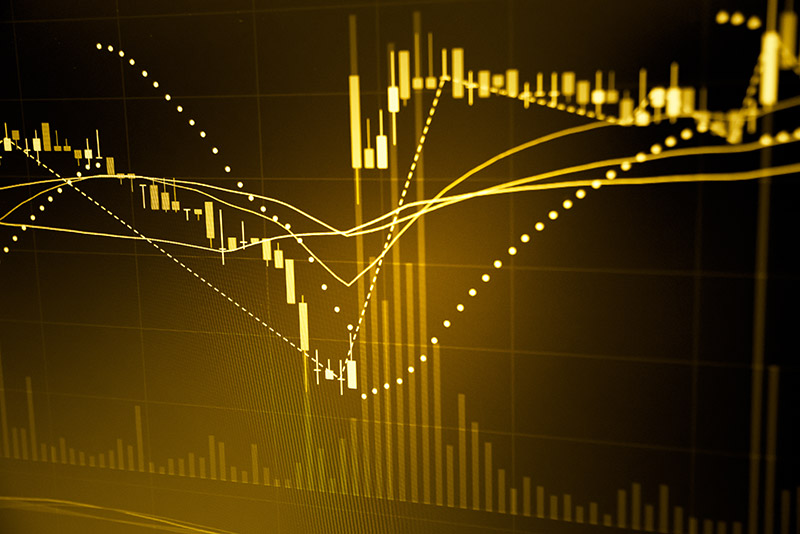What are the Different Types of Gold Investments?
Physical Gold
Jewelry
Almost 50% of worldwide demand for gold originates from jewelry, mainly attributed to its ease of access and people’s inherent affinity for it. However, jewelry is a comparatively expensive form of gold investment because it involves high markups and workmanship costs. Jewelry can also be of lesser quality than gold bars and may not reflect the global gold price. Owning jewelry may be pleasurable, but it is not the most profitable form of investment.
For the full article, click here.
Why Invest in Gold?
Holds its Value
Gold is an abundant natural element found in almost all corners of the world and has been utilized for thousands of years, both a medium of exchange and a valuable commodity. It has withstood the test of time and maintained its value through the ages, as a means of preserving wealth. Since the turn of the century, gold has been increasing in value from around $400/Oz to recently breaking the $2,000/Oz mark. At the same time, paper currency has been diminishing in value, due to high levels of inflation and global debt, while equity markets witnessed alarming volatility and deteriorations on the back of the 2007/2008 financial crisis and the more recent Covid-19 pandemic.
For the full article, Click here.
Gold & the History of the International Monetary System
The Gold Standard
During the late 1800s and leading up to the eruption of World War 1 in 1914, the Gold Standard was positioned as the predominant framework governing the world’s monetary system. Under this system, almost all currencies were tied to gold and could be converted into gold. This meant that all exchange rates between currencies were also fixed.
In the 1930s, following the Great Depression, the United States and Britain went off the gold standard, and the Federal Reserve prohibited banks from paying out consumers in gold. This decision on the Fed’s part was meant to prevent an ensuing run on the banks as consumers’ confidence in the economy faded. The idea here was to try and keep as much gold as possible in the hands of the Federal Reserve, which in turn would allow the Fed to increase the money supply and counter the looming economic crisis.
The Bretton Woods Agreement
As World War II ended, so did the existing international monetary system. In 1944, The Bretton Woods Agreement was established to set a new monetary system to stabilize the world economy. One of the critical features of the agreement was to choose the U.S dollar as the world reserve currency; other currencies would be fixed to the dollar, and the dollar itself would be pegged to gold at a price of around 35$ per ounce.
This meant that countries could now exchange their currencies or dollars with gold, without the need for physical delivery, as the gold would be stored in the U.S. However, to keep the system intact, there had to always be enough gold backing all the money in circulation, but that quickly hadn’t become the case.
Suspension of Gold Convertibility
During the 50s and 60s, the U.S economy grew rapidly, and so did its obligations. The Federal Reserve started printing more money to keep up with demand. Countries began to worry that the U.S government was spending more money than it had gold. As a result, countries started exchanging their dollars for gold and demanding physical delivery. To prevent the outflow of gold from the U.S and protect the dollar, in 1971, President Nixon suspended gold convertibility, and the gold standard was abandoned altogether.
The Birth of Fiat Currency & the Debt Crisis
Fiat currency is backed by nothing but consumer sentiment and confidence. As mentioned before, at one point, money was backed by gold and yielded its value from the allure and promise of the yellow metal. Therefore, the cash in circulation had to always be equivalent to the gold backing it. By removing this link, governments could now borrow without limits, which gave rise to an unprecedented increase in money supply to meet growing demand and finance governments’ perpetual budget deficits. Money’s value and purchasing power eroded quickly, inflation rose faster than income, and fiat currency was born.
Following the Great Depression, the dominant Keynesian economics theory argued that governments had to spend more to meet growing economic needs and cater for rapid growth to stimulate the economy. Others believed that delinking currency from gold brought about a system that strips away any intrinsic value tied to money, ultimately giving rise to unparalleled levels of debt and inflation.
The Promise of Gold
As money became worth less and less and as confidence in the global financial system wavered, people turned to gold, as it retains its value much better than any form of fiat currency. In terms of secured risk-free investments, gold tops the list. Gold will never lose its entire worth, as other money and capital market instruments may do. In times of crisis, demand for the yellow metal increases as investors resort to a safer investment that is less vulnerable to economic and geopolitical factors. That is why gold prices tend to increase in value at times of financial crisis.
During 2007/2008, a global financial crisis unfolded due to the U.S subprime housing crash. During the crisis, equity markets worldwide had taken a significant blow, which prompted a massive rise in gold prices, as investors became heavily reliant on gold to preserve their capital. The recent Covid-19 outbreak also brought about a steep downturn in the global economy; concurrently, markets have seen a surge in international gold spot prices, signifying a recurring positive correlation between economic crises and rising gold prices.
Gold benefits from diverse sources of demand and historically preserves its value over time as an investment, reserve asset, inflation hedge, luxury good, and a technology component. Gold is also highly liquid and inherently holds no liability or credit risk. As confidence in the global financial system wavers, people turn to gold as it retains its value much better than any other form of investment. This increased demand drives prices upwards, and with a historically inexhaustible supply, gold is expected to be a safe investment for the foreseeable future.
Digital Gold & Egypt’s Precious Metals Ecosystem: A Game Changer for Egypt’s Financial Inclusion
In recent years, financial innovation has enabled businesses around the world to effectively cater to customers’ needs, by introducing high-tech financial products, designed to reduce barriers to alternative forms of investments. Among the many game-changing financial innovations globally gaining traction, is the authorization and facilitation of investments in LBMA compliant, investment-grade gold through digital transactions, utilizing online portals and platforms.
For the full article, Click here.





